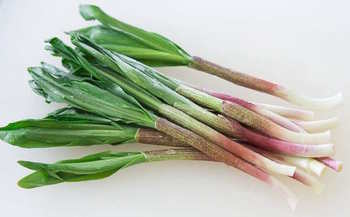Spring 春 行者ニンニク ”Gyoujya ninniku"
2017年04月18日

北海道では、この植物を俗に「アイヌネギ」と呼ぶことがあります。
The plant " “Gyoujya ninniku” " is in Hokkaido sometimes called "Ainu onion".
アイヌの人々は春先に大量に採集し、乾燥保存して一年間料理の食材として利用していました。
Ainu people collected large quantities in the early spring.
They dried, preserved and used gyoujya ninniku as food, enough for one year cooking.
アイヌの民間信仰では、その独特の臭気は魔物を祓う力があるとされ(天然痘などの)伝染病が流行した際は、
村の入り口に掲げ、病魔の退散を願った。
Ainu 's folk belief was convinced that gyoujya ninniku was good against infectious diseases (such as smallpox)
and that gyouza niniku had the power to exorcise demons.
昔のヨーロッパでも、本種は欧州の山岳地帯の人々によって薬用や呪物崇拝の物具(護符)として栽培されていました。
Even in old Europe, this species was cultivated as medicine and as fetish (amulets)
by people in the mountainous region.
ギョウジャニンニク の学名は Allium Victorialis です。
「勝利の山野草」は普通名です。
The scientific name of gyoujya ninniku is "Allium Victorialis".
The common name is " Mountain wild plant of Victory ".

Posted by ダイアンクライス広報室 at 15:39│Comments(0)





